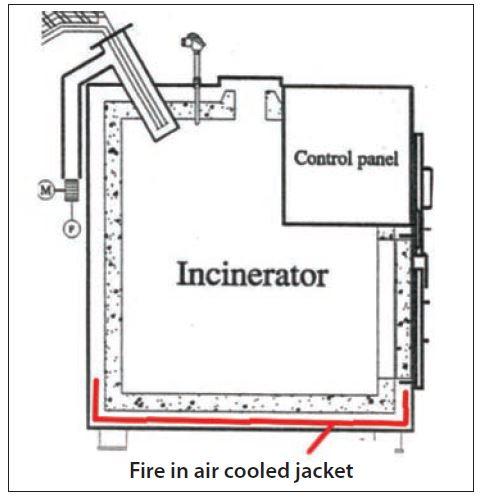202117 Incinerator fire under control
A vessel underway started its incinerator to incinerate oily rags and sludge. About five hours later, after the job was completed, the incinerator was stopped. All specifications appeared normal and the furnace temperature was noted to be 950°C. Following the company procedure, the crew continued to monitor the incinerator during the cooling off period. By 1900, five hours after the incinerator had been turned off , the temperature of the furnace was noted to be 280°C and the blower fan was still running.
At 2032, the duty engineer noticed smoke coming from the outer body of the incinerator. On closer inspection, he could see paint peeling off the body of the incinerator. The temperature of the incinerator body was between 250-350° C. He informed the Chief Engineer and an emergency response was initiated. The crew mustered and fire parties began boundary cooling. Boundary cooling was continued for about four hours until heat indications suggested that the fire was extinguished.
During the investigation it was found that the fire had started in the air-cooled incinerator chamber jacket. Later, it was found that refractory and outside body plates were intact. Traces of oil were found between the sludge dosing door and the combustion chamber, which was an indication that oil had accumulated in the double shell refractory lining.

Lessons learned
● Even during the cool off period, an incinerator must be attended to
and regularly checked.
● Boundary cooling and cool heads are a great asset when fighting a
shipboard fire.
